Sound Pressure Level (SPL)
Sound pressure level (SPL), expressed in decibels (dB) is commonly used in acoustics. It can be measured in the air using a microphone and in water using a hydrophone.
Sound pressure level (SPL), expressed in decibels (dB) is commonly used in acoustics. It can be measured in the air using a microphone and in water using a hydrophone.
The sound pressure level is a logarithmic measure of the effective pressure of a sound relative to a reference value, defined in dB (decibel). The commonly used reference sound pressure in air is 20 μPa, which is often considered the threshold of human hearing. The lower limit of audibility is defined as a sound pressure level SPL of 0 dB. The largest pressure variation an undistorted sound wave can have in Earth’s atmosphere is 1 atm (194 dB peak or 191 dB SPL).
Sound pressure is the local deviation from the ambient air pressure caused by a sound wave. It can be measured in the air using a microphone and in water using a hydrophone. Sound pressure is measured in pascals (Pa). The mathematical definition of sound pressure is the total pressure, which equals static pressure plus dynamic pressure. The complementary variable to sound pressure in a sound wave is particle velocity, which together determines the sound intensity of the wave.
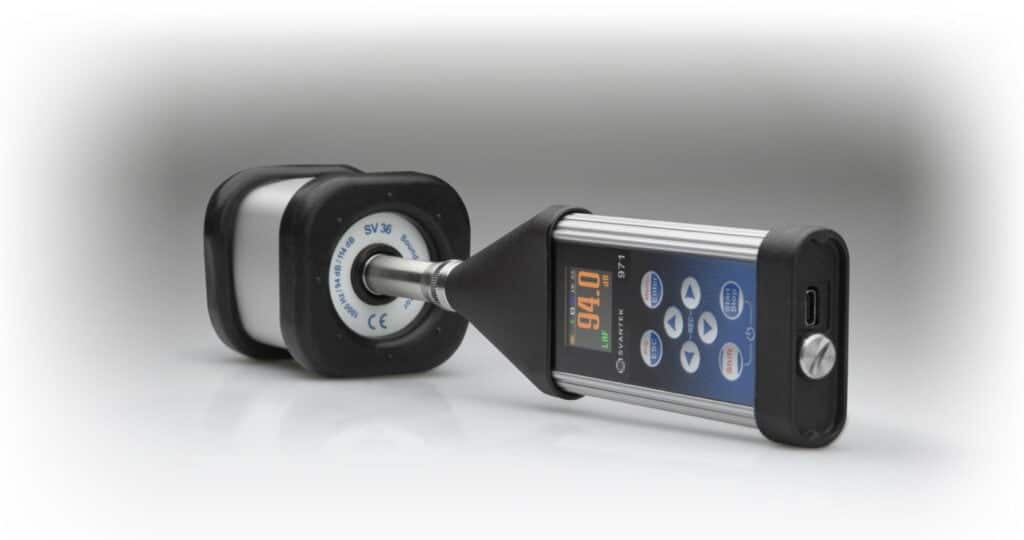
SPL sound pressure level measurements can indicate the potential for hearing damage. Exposure to sound pressure levels above 85 dB for prolonged periods of time can cause hearing damage, while exposure to levels above 120 dB can cause immediate and permanent hearing damage. Therefore, it is essential to measure SPL levels and take appropriate measures to protect oneself from loud noise exposure, such as wearing earplugs or earmuffs.
The frequency of sound affects sound pressure level (SPL) measurements, as the human ear has different sensitivities to different frequencies. Therefore, sound level meters use frequency weighting filters, such as the A, B, and C weighting filters, to adjust the sound pressure level SPL measurements to match the human ear’s sensitivity at different frequencies. A-weighted filters are commonly used for measuring environmental noise, as they best match the human ear’s sensitivity to mid-frequency sounds. B-weighted filters emphasize higher frequencies, while C-weighted filters emphasize lower frequencies.
Sound Pressure Level (SPL) calculation
To calculate SPL, you take the ratio of the sound pressure to the reference level of sound pressure and then take the logarithm (base 10) of that ratio, and then multiply by 20. This gives you the SPL in decibels (dB).
For example, if the sound pressure is 20 µPa, then the ratio of the RMS sound pressure to the reference level of sound pressure is 20/20 = 1. Taking the logarithm (base 10) of this ratio gives you 0, and multiplying by 20 gives you an SPL of 0 dB. This is the lowest possible SPL, which corresponds to the threshold of hearing.
On the other hand, if the sound pressure is 200 µPa, then the ratio of the RMS sound pressure to the reference level of sound pressure is 200/20 = 10. Taking the logarithm (base 10) of this ratio gives you 1, and multiplying by 20 gives you an SPL of 20 dB. This is much louder than the threshold of hearing, but still relatively quiet.
As the sound pressure increases, so does the SPL. At an SPL of 120 dB, the sound is considered to be at the threshold of pain, and any sound louder than this can cause permanent hearing loss.
When measuring sound pressure in Pa, adding 20 dB to the dB level is equivalent to multiplying the sound pressure by 10. For example, 200 µPa corresponds to 20 dB (re 20 µPa), while 2000 µPa corresponds to 40 dB.
What is the reference value for Sound Pressure Level (SPL)?
The reference value for SPL (Sound Pressure Level) is the minimum sound pressure level that can be perceived by the human ear, which is equal to 0 dB SPL. This corresponds to a sound pressure of 20 µPa (micro Pascals), which is also known as the threshold of hearing. The reference is used to calculate the difference in sound pressure levels between the measured sound pressure and the minimum audible sound pressure. The sound pressure levels are expressed in dB SPL, which is a logarithmic measure of the sound pressure level relative to the reference pressure.
ISO 1999 defines sound pressure level (Lp) by following formula:
Lp=10lg (p/p0)2
where, p is the sound pressure in pascals, and reference sound pressure p0 is 20 μPa, in accordance with ISO 1683.
The A-weighted sound pressure level LpA
LpA=10lg (pA/p0)2
where, pA is the A-weighted sound pressure in pascals.
Humans perceive sound pressure levels on a logarithmic decibel scale, which is related to the lowest human hearable sound pressure of approximately 20 μPa (20 micro pascal), also known as 0 dB. The lowest sound pressure level that humans can hear occurs typically between 3000 and 4000 Hz. A sound pressure of approximately 60 Pa, can cause pain in a normal human ear.
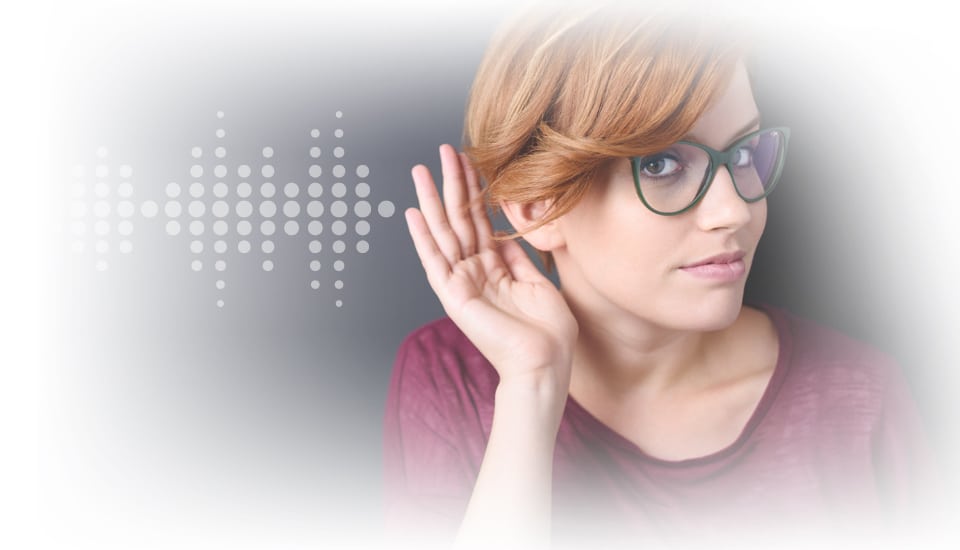
Because of large sound pressure amplitude changes, the sound pressure level in decibels (Lp) is used rather than Pascal units. Using the formula Lp=10lg (p/p0)2, where p is the sound pressure in pascals, and p0 is the reference sound pressure of 20 μPa. This formula expresses the sound pressure level as a logarithmic function of the ratio of the sound pressure to the reference pressure. Doubling the sound pressure in pascals increases the sound pressure level in decibels by 6 dB.
In the decibel scale, audible sounds range from 0 dB, the threshold of hearing, to over 130 dB, the threshold of pain. Although doubling the sound pressure corresponds to an increase of 6 dB, it takes about 10 dB of increase for the sound to subjectively appear twice as loud. The smallest change humans can hear is about 3 dB.
Sound pressure level (SPL) can be described subjectively based on the decibel (dB) scale. A range of 0 to 40 dB is considered quiet to very quiet, while 60 to 80 dB is generally described as noisy. A sound pressure level of 100 dB is perceived as very noisy, while anything greater than 120 dB is intolerable.
The human ear’s sensitivity to different frequencies is not equal, with the most sensitive range being between 2 kHz and 5 kHz. This means that the subjective loudness of a sound is not solely determined by its sound pressure level but also by other complex factors. Furthermore, this difference in frequency sensitivity is more pronounced at low sound pressure levels than at high ones. The equal loudness contours in the figure show the sound pressure level required at any frequency to give the same apparent loudness as a 1 kHz tone. For instance, a 50 Hz tone must be 15 dB higher than a 1 kHz tone at a level of 70 dB to have the same subjective loudness.
Impulse sounds, on the other hand, pose a challenge in evaluating loudness. An impulse sound is a sound that is less than one second in duration. The ear is less sensitive to perceiving the loudness of such sounds because of their short duration. For instance, typewriter and hammering noises are examples of impulse sounds. Researchers generally agree that sounds shorter than 70 milliseconds have a lower perceived loudness than sounds of longer duration with the same sound pressure level.
The sound pressure level for some sources may vary depending on the distance between the source and the listener. The values in this table are provided as a general guide:
| Source | Sound Pressure Level (dB) |
|---|---|
| Threshold of Hearing | 0 |
| Rustling leaves | 20 |
| Quiet whisper (1 m) | 30 |
| Quiet office | 40 |
| Normal conversation at 1 m | 60 |
| Inside a car | 65-80 |
| Loud singing | 70 |
| Vacuum cleaner (3 m) | 75 |
| Buses, diesel trucks, motorcycles (15 m) | 80 |
| Jackhammer (15 m) | 90 |
| Subway (inside) | 94 |
| Lawn mower (1 m) | 107 |
| Deafening, human pain limit | 120 |
| Jet plane (30 m) | 130 |
| Threshold of pain | 140 |
| Military Jet Take-off (30 m) | 150 |
| Large military weapons | 180 |
SPL sound pressure level is typically measured using a sound pressure level meter. The sound pressure level meter includes a microphone, processing section, and display. Sound pressure waves set a microphone membrane in movements, which are converted into electrical signals by the sound pressure level meter. Next, the SLM converts electrical signals into digital ones so they can be displayed in the form of decibels.
To calculate the A-weighted sound pressure level (LpA)the SLM uses frequency-weighting filters which adjust the sound pressure reading to match how sensitive the human ear is to different frequencies. The A-weighting filter puts more weight on the frequencies that humans can hear best. The SLM can also integrate the sound pressure over time in the form of the equivalent continuous sound level (Leq), which is the average energy of sound over a certain amount of time.
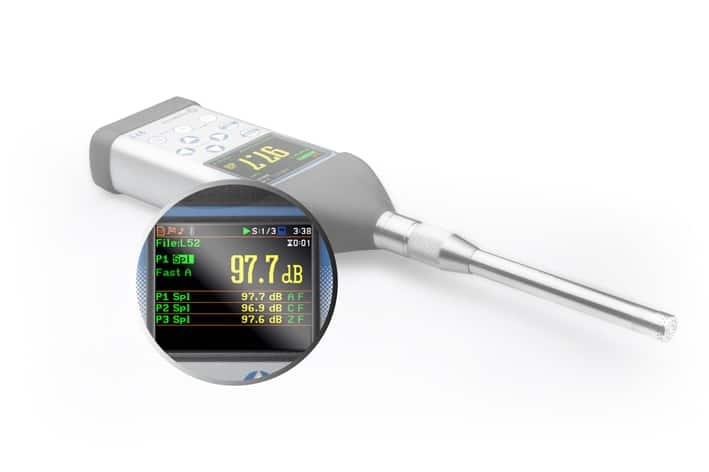
When measuring sound, it’s important to accurately capture the variations in sound pressure level, which can fluctuate rapidly. Historically, analog sound meters couldn’t keep up with these fluctuations, resulting in erratic readings. To address this issue, two detector response characteristics were standardized: Fast (F) and Slow (S). The Fast detector response has a time constant of 125 milliseconds, which allows for a fast-reacting display response that can accurately measure not too rapidly fluctuating sound levels. On the other hand, the Slow detector response has a time constant of 1 second, which gives a slower response that helps average out the display fluctuations on an analog meter.
Modern sound level meters with digital displays overcome the problem of fluctuating displays. However, they still use Fast and Slow detectors as they are often dictated by the standard upon which the measurements are to be based.
A, C, and Z weightings are frequency weightings used in noise level meters to adjust the measured sound pressure level (SPL) to better match the human perception of sound.
The A-weighting curve shows how the human ear reacts to different sound pressure levels, and it is often used to measure noise in the environment and in industry. The A-weighting curve attenuates low and high-frequency sound pressure levels, giving more weight to frequencies between 500 Hz and 10 kHz, where human hearing is most sensitive.
The C-weighting curve measures the overall sound pressure level across all frequencies without attenuation. It is used for measuring sound in high-level noise environments, such as rock concerts or airport runways.
The Z-weighting curve is also known as “linear” or “flat” weighting and does not apply any frequency weighting to the SPL measurement. It measures the sound pressure level across all frequencies and is used for scientific measurements or calibrating instruments.
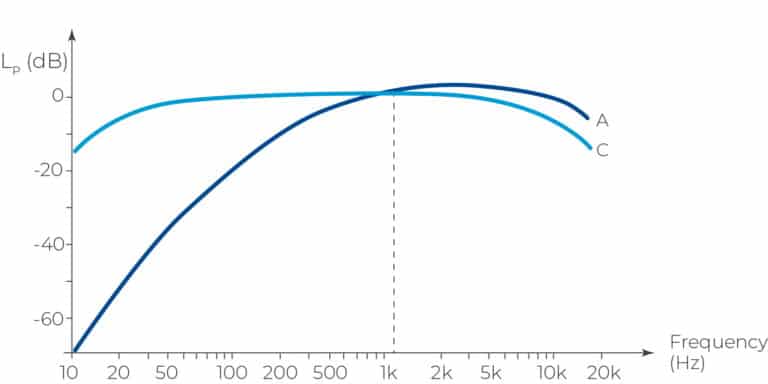
LAF and LAS are commonly used weighted sound pressure levels in modern acoustic standards, such as IEC 61672.
Both LAF and LAS are commonly used in occupational noise exposure measurements and environmental noise assessments. Overall, the relationship between SPL, LAF, and LAS is that LAF and LAS are two different ways to measure SPL, using specific A-weighted frequency weightings.
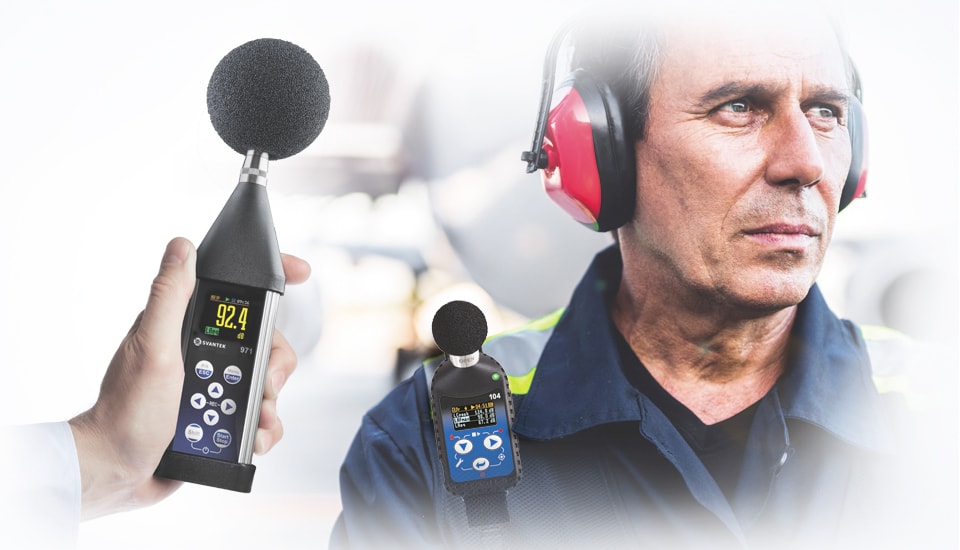
Sound is a form of energy, and the amount of hearing loss caused by exposure to a sound environment depends on both the level and duration of the exposure. To determine if a sound impacts human hearing, measuring the sound pressure level and its duration time is required. The equivalent continuous sound level (LEQ) provides information on how much energy a person was exposed to. LEQ measurements are used for many types of acoustic measurements, including building acoustics, environmental noise, and occupational noise. The LEQ is a linear average of the squared sound pressure over a given time period and does not use time weighting. The Leq is useful in representing an equivalent sound energy level over time and is commonly used to represent noise exposure levels in workplaces and other environments.
LEQ measurements can be performed over any suitable time, called integration time, while SPL measures the instantaneous sound pressure level at a specific moment in time. Svantek sound pressure level meters record both sound pressure levels and LEQ in the form of consecutive integration times in a time history logger file.
In acoustics, loudness and intensity are different measurements than SPL (Sound Pressure Level). SPL is a measurement of the pressure level of a sound wave relative to a reference level, usually given in decibels (dB). It is a measure of the physical strength of a sound wave.
The sound pressure level (SPL) of a sound wave decreases as the distance from the source increases. This is because sound waves spread out in all directions as they travel away from the source, and the energy in the wave is distributed over a larger and larger area. The decrease in SPL with distance is known as sound attenuation.
The rate of sound attenuation depends on many things, such as the frequency of the sound wave, the size and shape of the source, and the environment in which the sound is traveling. However, as a general rule, the SPL decreases by 6 decibels (dB) for every doubling of the distance from the source.
For example, if the SPL of a sound wave at a distance of 1 meter is 80 dB, it will be 74 dB at a distance of 2 meters, 68 dB at a distance of 4 meters, and so on. This means that how loud a sound seems to depend a lot on how close you are to the source. When measuring and controlling noise levels in different places, it is important to keep this in mind.
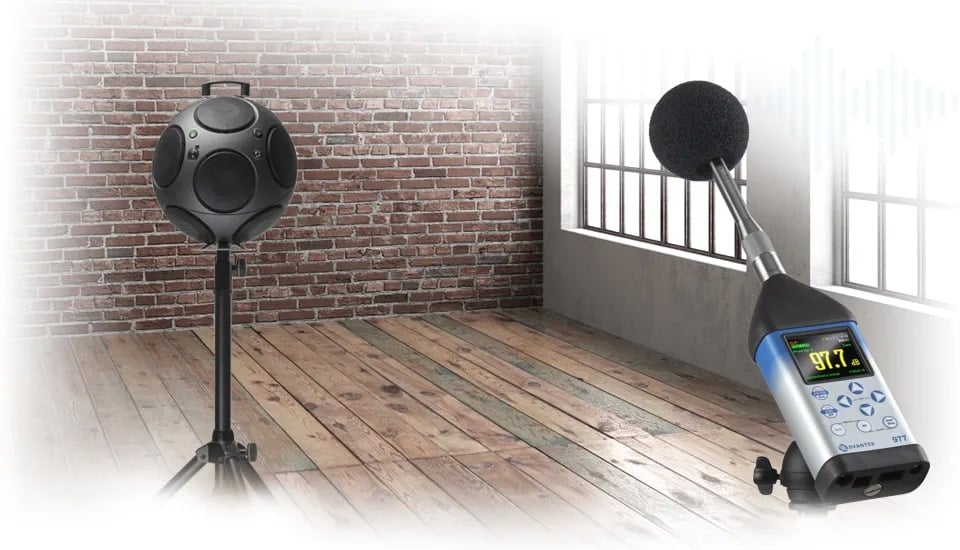
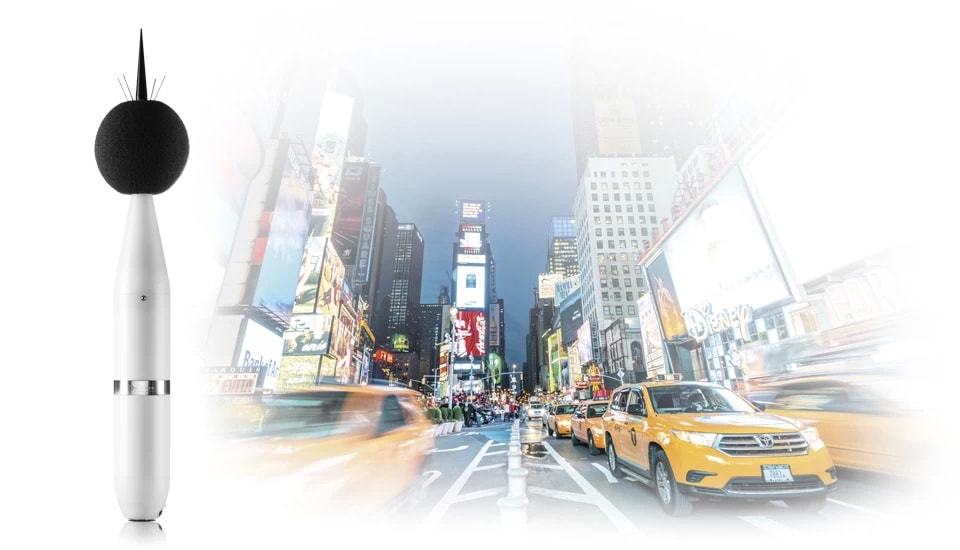
Sound Pressure Level (SPL) has various applications, some of which include:
Environmental noise monitoring: SPL is used to measure and monitor noise levels in the environment, such as noise pollution in urban areas, industrial noise, and transportation noise.
Occupational noise monitoring: SPL is used to measure noise levels in the workplace to protect workers from hearing damage and monitor compliance with occupational health and safety regulations.
In audio engineering and production, SPL is used to measure and keep an eye on sound levels in recording studios, concert halls, and other places where audio is made, so that the sound quality and volume are always at their best.
Product testing: SPL is used in product testing, such as testing the sound output of speakers and headphones.
Research and scientific studies: SPL is used in scientific studies to measure and analyze sound levels, such as in studies of animal communication, the effects of noise pollution on wildlife, and the impact of noise on human health.
In the context of audio, SPL is used to describe the loudness of audio signals. SPL is used in the design and testing of audio equipment, such as speakers and headphones, to ensure that they produce sound at safe and appropriate levels. It is also used in recording studios and live sound environments to monitor the volume of audio signals and prevent hearing damage to performers and listeners.
Calibration is necessary to ensure that sound pressure level meters provide accurate and precise measurements. To calibrate a sound level meter, a portable acoustic calibrator is placed over the microphone. The calibrators provide a defined sound pressure level to which the sound pressure level meter can be adjusted. The typical sound pressure levels used for calibration are 94 dB or 114 dB (the choice depends on the acoustic background).